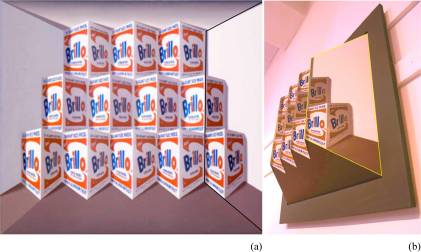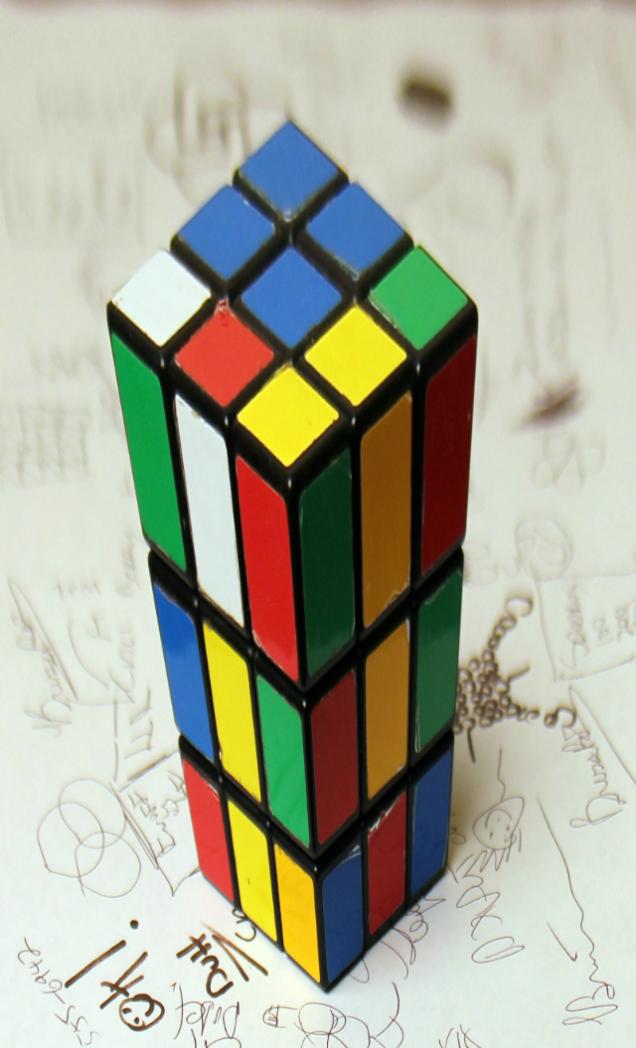Consider calling it forced perspective used for comedic effect.
From Wikipedia:
Forced perspective is a technique which employs optical illusion to make an object appear farther away, closer, larger or smaller than it actually is. It manipulates human visual perception through the use of scaled objects and the correlation between them and the vantage point of the spectator or camera. It has applications in photography, filmmaking and architecture.
...
An example used for comic effect can be found in the slapstick comedy Top Secret! in a scene which appears to begin as a close-up of a ringing phone with the characters in the distance. However, when the character walks up to the phone (towards the camera) and picks it up, it becomes apparent that the phone is extremely oversized instead of being close to the camera. Another scene in the same movie begins with a close-up of a wristwatch. The next cut shows that the character actually has a gargantuan wristwatch.
Although forced perspective is often used with differences in scale, it refers to the situation where the viewing angle and viewing position are determined by the artist so that the audience is guided to a particular interpretation of the artwork.
Here is an example where 3D boxes and (2D) paintings (of boxes) are combined to trick the senses into thinking that some unrelated surfaces are part of the same box:

- Papathomas, Baker, Yeshua, Zhuang, Ng, The ingenious Mr Hughes: Combining forced, flat, and reverse perspective all in one art piece to pit objects against surfaces
(Note that although the terms flat perspective and reverse perspective are defined in opposition to forced perspective in the paper, the overall effect is known as forced perspective more generally.)
The videos you linked include a scene in which a train looks like it is about to demolish a house that is being transported, but in reality runs on a separate track that completely misses the house. That scene is an example of forced perspective as well.
Anamorphic illusions are another example of forced perspective. A distorted 2D painting (anamorphosis) is first created, based on a 3D scene. The anamorphosis looks distorted from almost all angles, but from one specific vantage point, it looks identical to the scene. If the viewer's perspective is forced to that vantage point, the viewer may be unable to tell the difference - especially if the view is captured and presented as a 2D photograph or video. See this page for an example. I can't embed video in my answer, but here is a picture from the same page:

- Robbie Gonzalez


